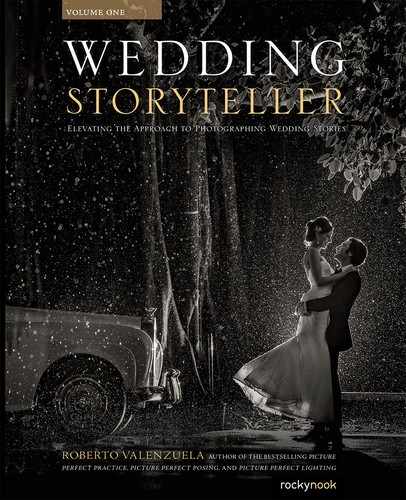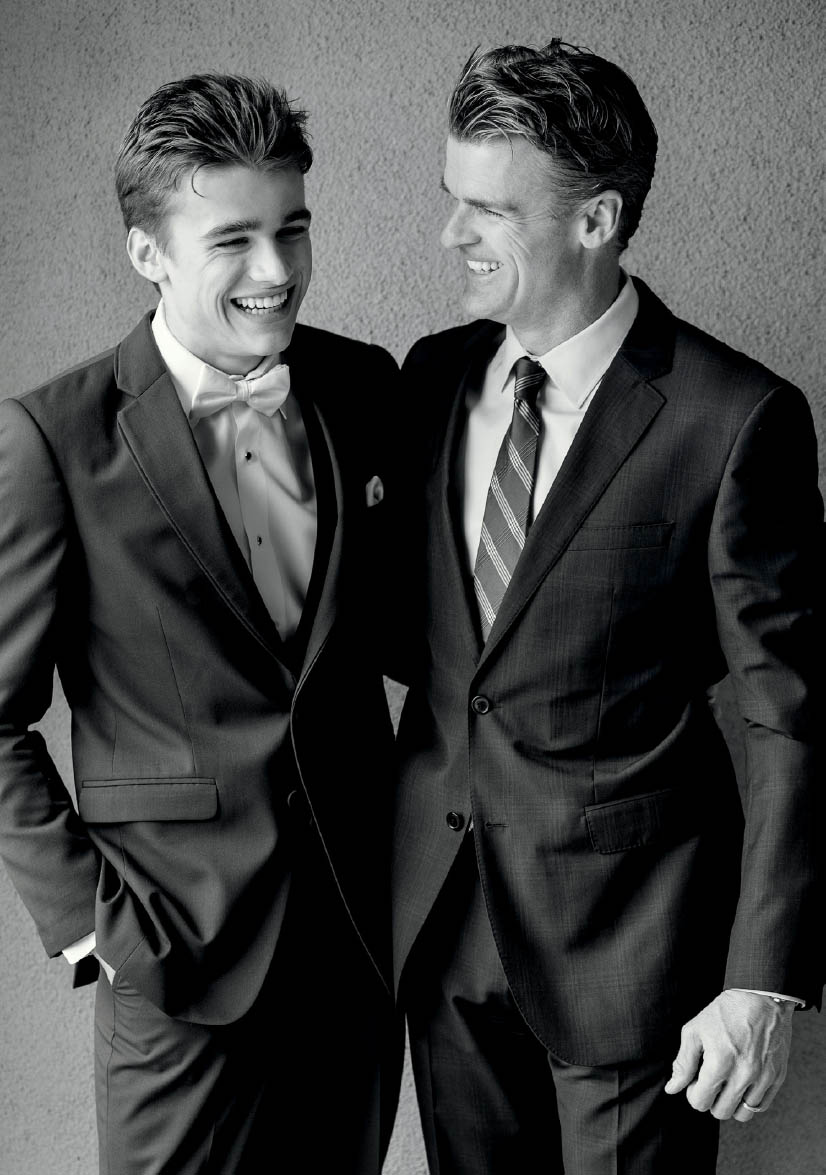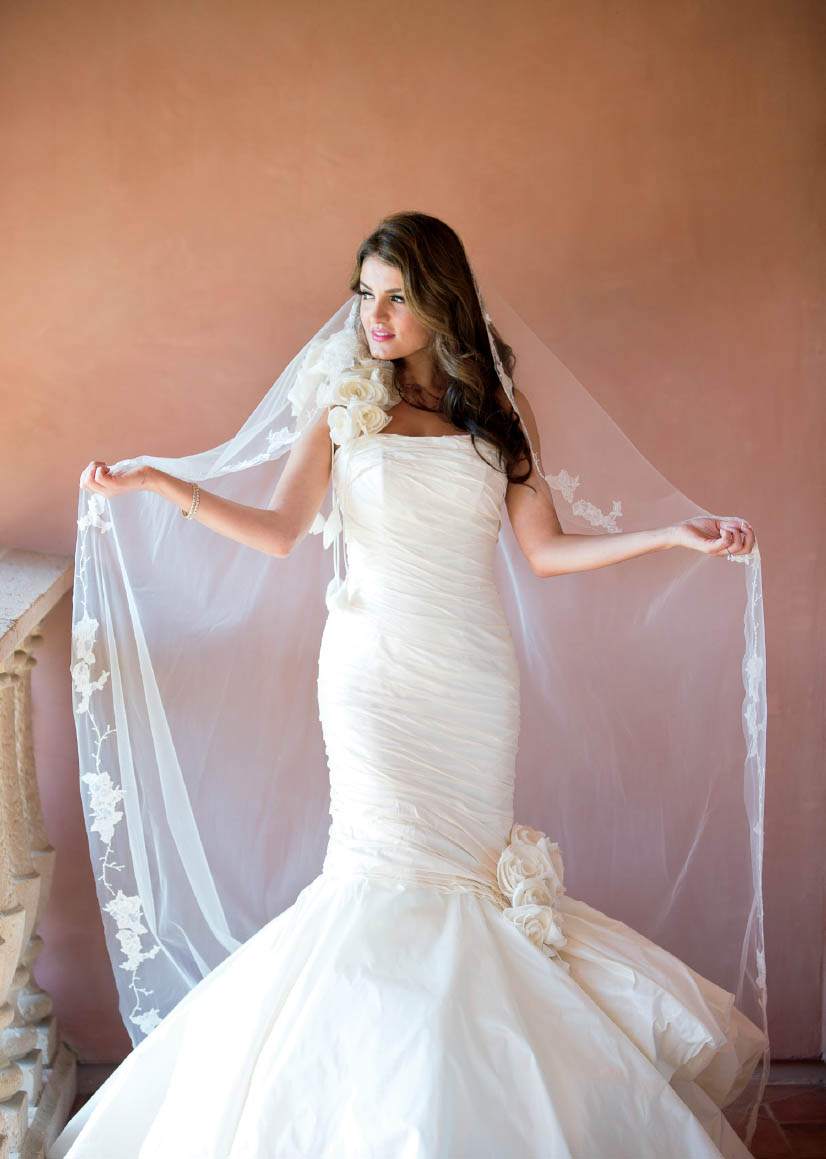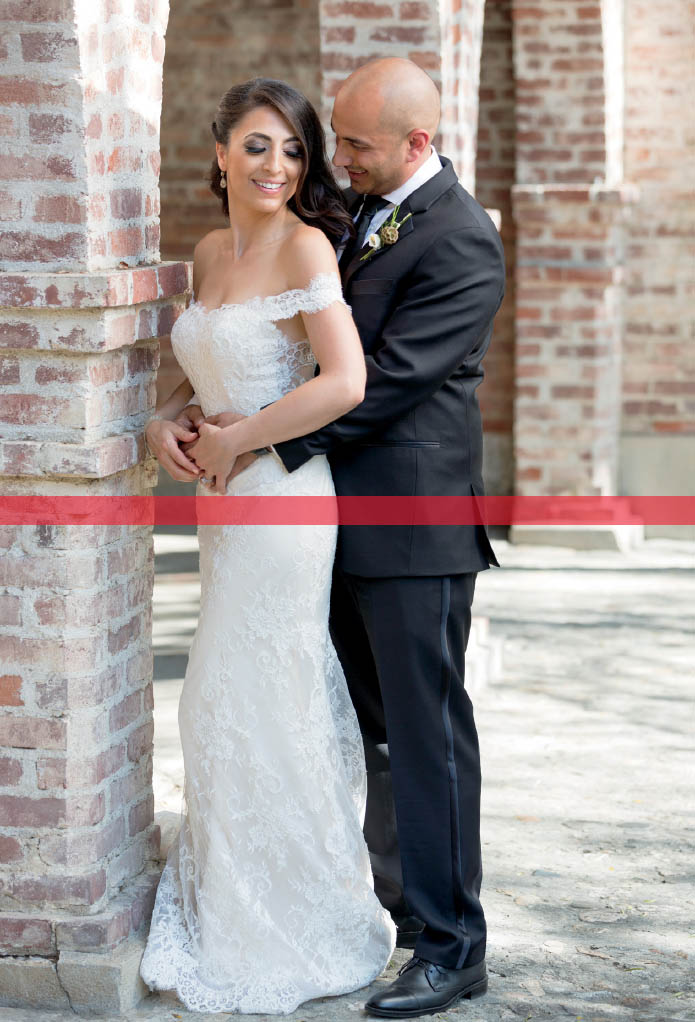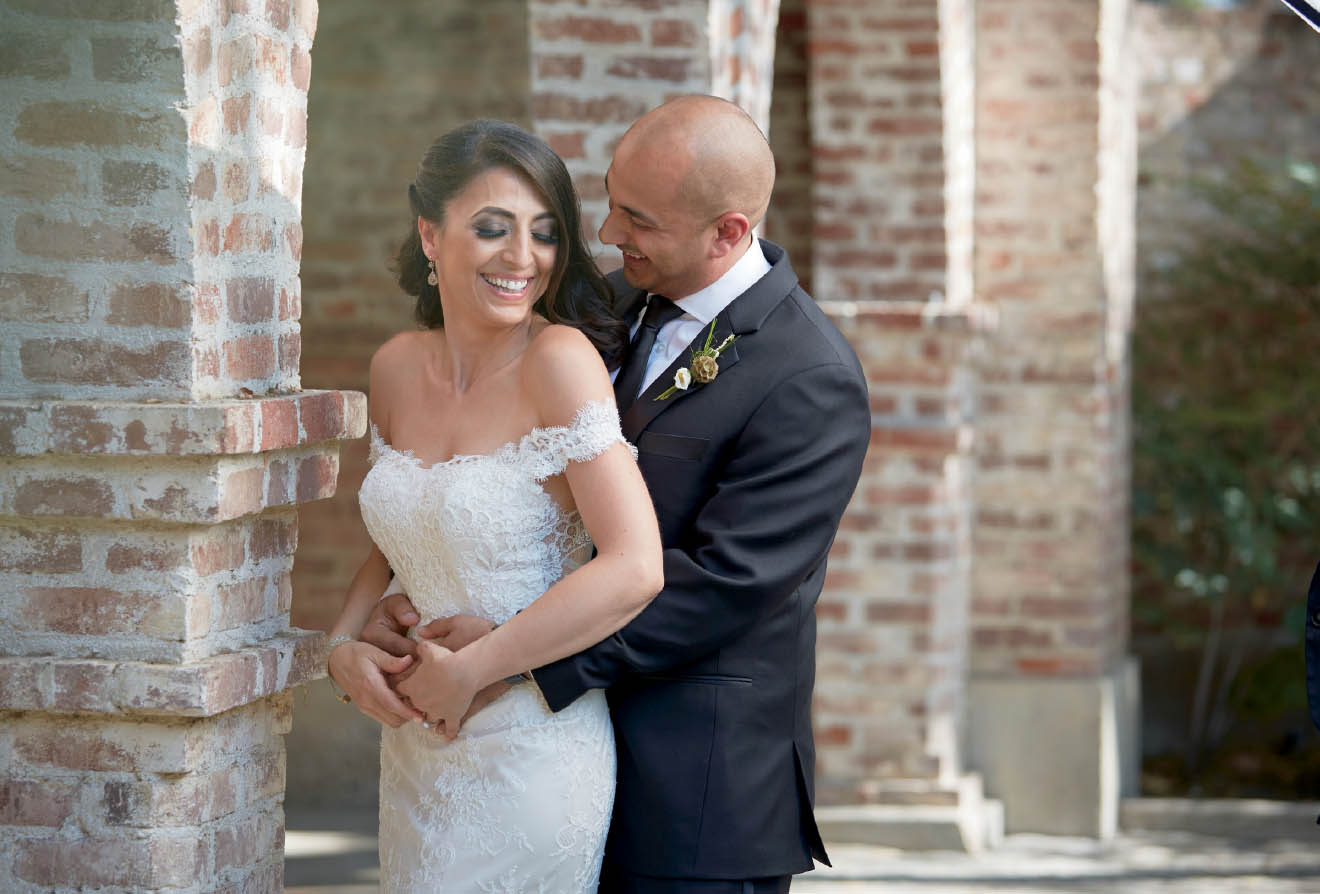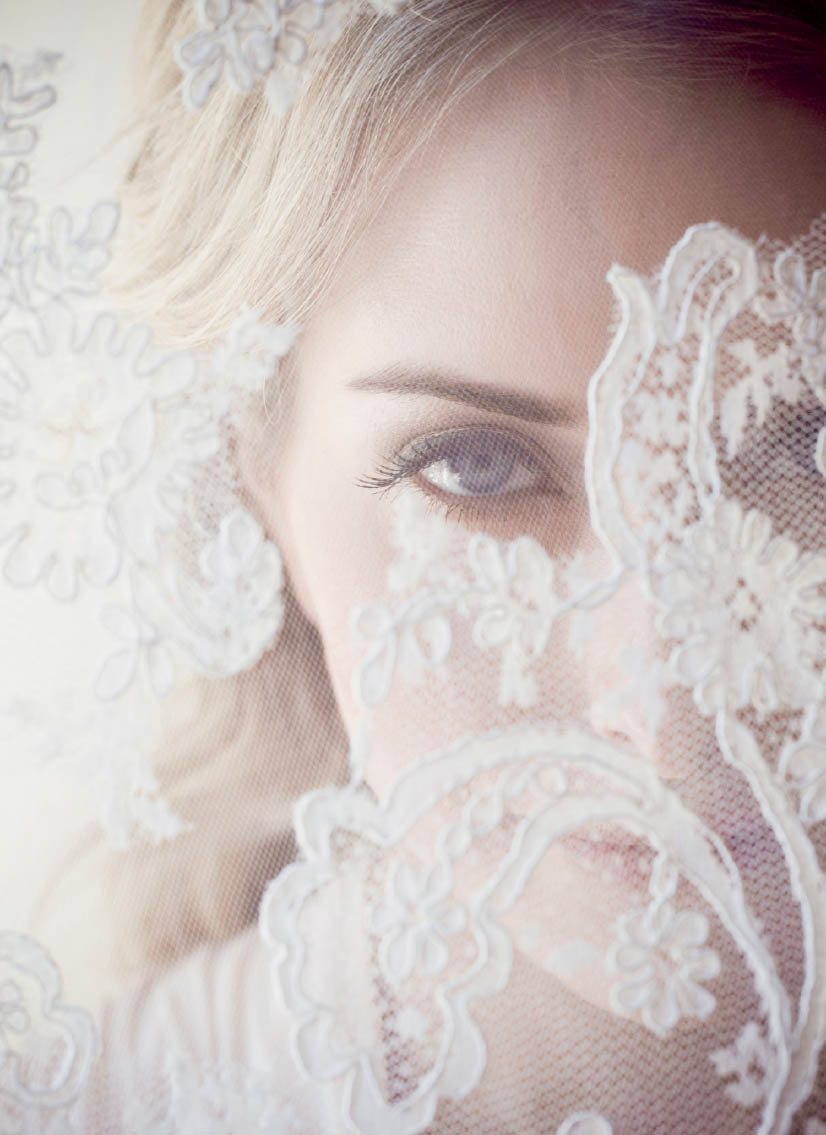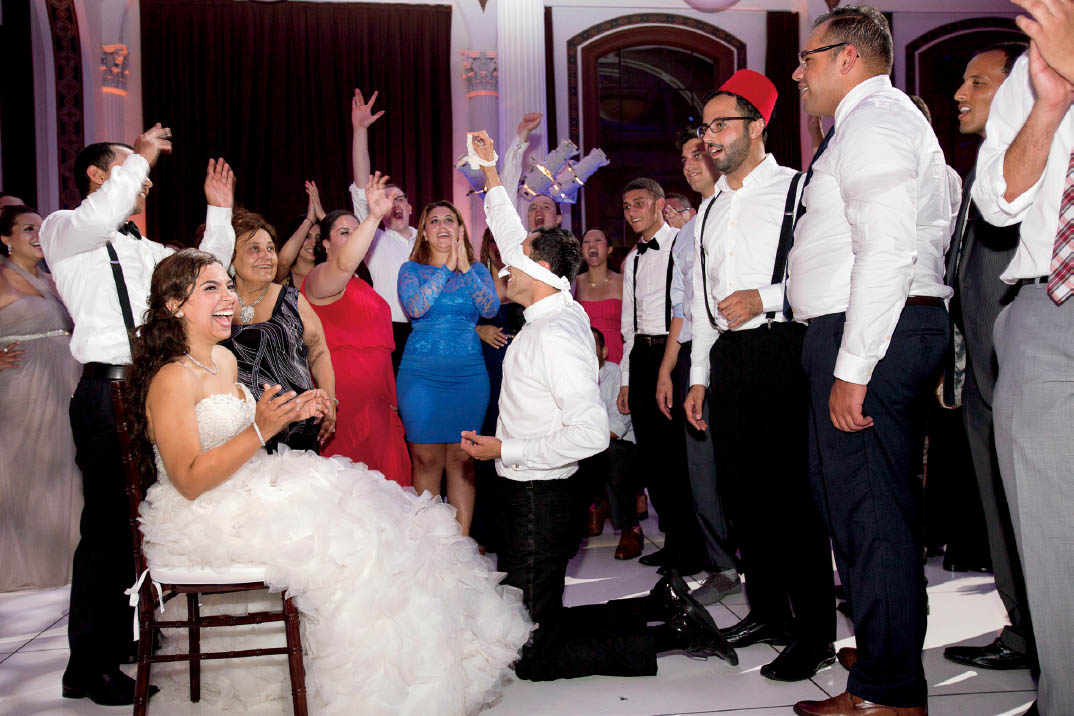chapter 16
POSING AND EXPRESSION EXPERT TECHNIQUES
This chapter focuses less on traditional posing techniques, and instead emphasizes an approach that removes the “posed look” from your photos. Paying more attention to influencing expression and directing movement will make a significant difference in how couples look in their wedding photographs and how they feel about them.
I consider these posing techniques to be part of the expert components system because they require absolute attention to detail, and you must raise the bar to make sure you are capturing expressions that are realistic and have an exciting energy to them.
I also explain how and when to use touch with EVP to increase the emotional energy of a photo. Imagine that the groom and his father are standing next to each other without any physical contact whatsoever. The photo would appear quite awkward and would convey a very low sense of family affection. Because I have already discussed posing and composition previously in this book, I will focus purely on those elements of posing that will take photos from being simply nice to an expert technique level.
Since you are already reading this book, it is an accurate assumption that you have a deep desire to become a much better photographer than you are today. You want to keep advancing because you realize that being complacent in such a competitive field could lead to failure. For these same reasons, I always ask myself a series of questions that have helped me tremendously in my ongoing quest to keep pushing myself further.
Key Questions to Ask Yourself That Will Help Keep You on Your Toes Before Pressing the Shutter Button
- Does this photo contain something that will hold your attention?
- Is this photo intriguing to look at via its composition, lighting, or posing?
- Does capturing this photo require a higher-level skill than that of the average photographer?
- Would this photo evoke feeling(s)?
I consider these questions to be my mantra. In fact, the expert techniques in this book were developed to answer these four questions with a resounding “Yes!” I have found that many overly technical photographers can nail the technical side of a photograph, but the photograph looks stale and devoid of emotion or feeling; they answer “yes” to technical question #3, but “no” to #4, and this results in a technically flawless photo that lacks human connection.
I do realize that it is not realistic to ask yourself these four questions for every photograph you are about to take at a wedding. But there are many times when a small adjustment or a little bit of extra effort to draw out an emotion or improve the lighting leads to a vast improvement in the final photo. In fact, by simply having these four questions in the back of my mind, I become a better photographer even if I don’t implement them all the time. Trying to answer yes to these four questions as many times as possible during a wedding makes it very difficult to become complacent.
CREATING AND CAPTURING MOVEMENT TO ACHIEVE A SENSE OF SPONTANEITY
One of the most common flaws in posing is when the pose looks contrived or fake. A master’s approach to posing renders the pose invisible. In other words, you do not notice the pose. When people who are not used to being photographed see a giant professional camera pointed in their direction, they involuntarily tighten up and freeze. A good and relaxed posture is key to the success of any photograph, but I consider that to be a basic posing skill, not an expert component. However, noticing and gently removing the awkward rigidness that occurs in the human body is a key component to taking posing to a higher level. Two basic methods that eliminate the posed look are: removing rigid posing patterns, and capturing natural poses while the subject is in movement instead of in a static state.
- •Method 1: Simply adjust one side of the subject’s body up or down to remove the mirroring of arms and legs, which creates a rigid look.
- •Method 2: Add movement. If you capture your subject while they are moving—even if the pose still has elements of mirroring—the repeating pattern will not be very damaging to the believability of the pose. Remember that the goal is to make the pose look invisible.
Method 1: Notice and Change the Pose to Remove the Mirroring
Figure 16.1: This is a very nice portrait of the groom and his father in the stylized aware approach. Although there is nothing wrong with this portrait, the clear mirroring of each other was too much for me, not to mention the hand coming out from the father’s waist. You are probably wondering why I’m not happy with this photo. I am okay with it, but any photographer, regardless of skill level, could have taken this photo. That is the issue. If I can try harder to do something special, why not do it?
FIGURE 16.1
Figure 16.2: At a different location during the wedding, I pushed myself harder to break the static, posed look and create a moment of candid laughter. I changed my approach from stylized aware to stylized unaware. To be honest, both photos are good, but which one commands more of your attention? Which photo do you find more interesting to look at? Which one requires more skill to capture? And which one makes you feel something?
FIGURE 16.2
Method 2: Add and Capture Movement to Remove the Static Feeling of Mirroring
Figure 16.3: This is what happens when you create a pose but you don’t follow through and finish it. In this case, I felt the urge to showcase the bride’s beautifully designed veil. So I asked her to lift it with both hands and look to her right. However, notice the evident mirroring of her arms. Since the wall behind her has even luminosity levels and the circumstantial light on that balcony is great, the photo looks beautiful, but the pose is not invisible. This photo looks as if she is following the photographer’s directions. There is something missing.
FIGURE 16.3
Figure 16.4: This is a successful attempt at getting it right. I wanted the pose to be invisible and the viewer to be drawn to the veil. This time, I asked the bride to slowly turn toward the wall and look to her left, which is where the light was coming from. The purpose of the slow turn toward the wall was mainly to create movement. The resulting pose from that movement is not perfect, and it doesn’t have to be. This photo has an incredible sense of romance and beauty, and the veil has become the main attraction. By adding and capturing the bride with some movement, there are no signs of contrived posing, even when some elements of mirroring remain. That is another reason why I consider this technique an expert component.
FIGURE 16.4
Figure 16.5: I want to show this last example because I love the results when following through with this expert technique. This balcony at the Bel-Air Bay Club had several great circumstantial light elements that compelled me to use the location to take a portrait of the bride. I could have taken the easy route and asked her to stand and look at my camera mounted with a telephoto lens. However, I wanted to add this expert technique of capturing movement and creating a sense of spontaneity. I decided to use the stylized unaware approach. To create this portrait, I asked the bride to rotate halfway clockwise, then slowly turn back toward me while locking her eyes on a specific point that we agreed on. I am very happy with the results. I did not capture the bride in a static pose, but instead captured her in movement. If you are wondering how long this pose took to set up, it was less than 30 seconds. With practice, you will realize how easy it is to come up with an excuse to add movement to a simple pose.
FIGURE 16.5
CAPTURING PEAK ACTION AND ACHIEVING NATURALLY ENGAGED EXPRESSIONS
One of the most interesting challenges of being a people photographer is to capture a meaningful expression. The difficulty comes from how uncomfortable it is for most people to be photographed. Having a portrait taken often awakens acute self-consciousness in a person. When a camera is pointed in a subject’s direction, he or she automatically tenses up and doesn’t know what to do. Most individuals have an instinctive desire to appear “socially normal,” whatever that means. As photographers, being able to capture an unselfconscious expression from our subjects when they are aware of the camera is an expert technique due to the high degree of confidence and skill the photographer must have in order to coax their clients to let go of their inhibitions.
Creating a Safe Environment for People to Allow Themselves to Become Vulnerable
The first step is that the photographer must be enthusiastic, positive, fun, and radiating confident energy. If you can be like that, clients will reward you by giving you their trust and respect. Their defensive barriers against the camera will begin to crumble, and their emotions, personalities, and thoughts begin to reveal themselves in front of your camera.
Contagious Energy
Figure 16.6: This is a great example of being so close to taking a realistic and beautiful photo but for some reason not finishing the job. The expressions of the bride and groom fall short. The pose can be improved by giving the couple quick instructions to follow, but the expressions are quite different. To me, this is a two-step process. The first step is to position the couple as well as I can and make sure they know where exactly to look (this step poses their eyes). The second step is to have the couple react to something I have said. I put so much effort into what I’m saying that they simply can’t help themselves, and they react naturally. By having their eyes fixed on a specific spot, it will reduce the chances of their eyes rolling over or creating a look that is not what you had in mind. If you forget to pose the eyes during step one, the couple will almost always ask you or wonder where should they look.
FIGURE 16.6
Figure 16.7: This is the result of the second step I mentioned above. I push and push to get a reaction. I do whatever it takes to get the couple to loosen up, have fun, and react as they normally would to my bursts of energy. In this case, I told the groom to kiss her quickly on her left upper cheekbone, then pull back a bit and see her reaction. The first time he did it, it was very dull. Instead of giving up or trying to come up with something else to say, I gave it another try and with a high-pitched, high-energy voice, I asked the groom, “That’s it? That’s all you got? Come on man, kiss that cheek like you mean it! That cheek is yours, it wants your kiss, go give it what it wants!” Laughing, he immediately went for it, kissed her, and they both reacted with a beautiful, tender energy. If what I say doesn’t work, I will quickly turn to self-deprecating humor. I would say something like, “Wow, that did not pan out the way I imagined it,” with a humorous tone of voice. Note: Come up with something unique. Do not use the same lines for all your couples. They will feel it and not like it! Although it takes a lot out of me, I find the resulting photos to be some of the greatest rewards of being a wedding photographer. I can’t help but love their smiles and wonder what was going on to capture that moment. When photographers feel shy or lazy, they never accomplish this second step. They simply tell the couple to stand together and look at each other and smile. They may even say it in a monotonous voice that inspires no one, and the resulting photos will most likely show artificial smiles and emotionless expressions.
FIGURE 16.7
Create Anticipation
Figure 16.8: Another technique you can use to achieve a realistic expression is to create a feeling of anticipation. For this example, earlier in the day as I walked with the bride to the spot where the groom would be waiting for her and seeing her for the first time, I noticed that she was just walking from point A to point B, and there was an empty expression on her face. So I decided to use this anticipation technique. I stopped everyone from walking, and I informed the bride that the groom was extremely excited and nervous. Then I pointed to the area where the groom would now be standing. As she approached the area where the groom was waiting with his eyes closed, her face filled with the most beautiful expression of anticipation. I knew that this would happen, so I was ready to capture this moment. This technique can also be used the first time the bride sees her father, mother, best friend, or any other high-value EVP during the getting-ready portion of the wedding.
FIGURE 16.8
Create Concentration or Focus
Figure 16.9: You might recognize this photo if you have read my books. This is the image that was on the cover of my first book, Picture Perfect Practice. I consider this to be a great example of the “pay attention” technique. After positioning the dress (it is not her veil) over the bride’s head and bringing down her chin to the right level, I told her that I would be taking two photos. I asked her to focus on the shutter inside the camera, beyond the barrel of my lens. The first time she heard the shutter move would be the cue that the second, real photo would follow. I told her that when she heard the first shutter, she should focus on relaxing all of the muscles in her face. Then, the second photo would be taken with her face beautifully relaxed.
FIGURE 16.9
Sometimes I ask clients to look out the window and have them count just white cars, or red cars, or tree leaves, etc. I just need them to have something to focus their mind on. It doesn’t matter what it is, but I need them to think less about the camera taking their photo and more on the task given to them.
Figure 16.10: This was an easy photograph to plan. Since I wanted to take this photo in the stylized unaware approach, I needed the bride to avoid looking at the camera. To get her to focus, I simply asked her to keep her eyes on the stairs so she wouldn’t trip. I told her to make sure she felt her foot steady on each step and not on her dress. Notice how focused she is. This deep concentration gives the photo a beautiful sense of a moment just unfolding, not a photographer who had an idea. There is a distinct difference!
FIGURE 16.10
Recognize a Highly Emotional State
This is a technique for the photojournalistic or interactive photojournalistic approach. Recognizing the highly emotional meaning of an activity means that the photographer should be able to predict that emotions will be running high among the individuals involved, and that anything can happen. Examples include the first time the bride and groom see each other, the first time the bride sees her father, the couple exchanging vows, the couple’s first dance at the reception, the father/daughter dance, and the bouquet toss. These are all events that could cause people to cry emotionally or laugh heartily. During these times, the photographer must watch the action like a hawk, because at any time a great display of human emotions could occur.
Figure 16.11: During highly emotional situations, you want to focus 100% on what is in front of you. Be sure that your camera settings are set perfectly before the action begins, because chimping at the camera could cause you to miss a very powerful moment. During these times, the best photos don’t come with a warning, so be ready. Look how fun this photograph is. Everyone is at peak emotional action. The expressions on the bride and groom are so real and powerful that you almost feel their emotions through the photograph.
FIGURE 16.11
Figure 16.12: The father/daughter dance is one of the most powerful and emotional moments you can capture. This is a very emotional time for both the father and his beautiful, precious daughter. Photos such as these will be treasured more than the family’s most expensive possessions. If you work with second shooters, do not let them chimp at the camera during these events. Both you and your second shooter must be 100% focused on capturing the very best and beautiful human emotions that are unfolding in front of your lens. I feel a wave of emotion running down my spine just thinking about this photo. I remember how beautiful the energy was in the room during this father/daughter dance.
FIGURE 16.12
INCREASING AFFECTION THROUGH TOUCH AND ENERGY
This last posing expert technique is very simple to implement, yet I wish I saw more of it. The theory behind this technique is that when photographing EVP with the bride or groom, you want to be sure that their loving energy is felt through the photograph. You create this through physical touch. Otherwise, you end up with a photo of two or three people standing next to each other with their arms at their sides, looking at the camera with artificial smiles on their faces. This expert technique is about making EVP embrace each other in loving energy, even at the expense of a distracting posing element. Being constantly aware of this expert component will give your photos a much more loving energy.
Figure 16.13: This tender photo showcases precisely the results of implementing this expert technique when appropriate. This is a photograph of the groom with his grandmother, who is a highly valuable EVP. This is a perfect time to take the extra effort to give the photo a more tender and loving feeling by having the groom and his grandma touch foreheads, while the bride watches this affectionate moment.
FIGURE 16.13
Figure 16.14: For this photo of the groom with his mother, I wanted them to use both of their arms to embrace each other with their heads so close together that they are nearly touching side by side. Yes, I do notice the groom’s fingers coming from behind his mother’s back, but honestly, who cares? The photo is beautiful, and they look very happy to have each other at this important time in their lives.
FIGURE 16.14
Figure 16.15: How fun is this group photo? The main element creating the magic here is how much touching and embracing are occurring among the entire wedding party. I’m having fun yelling at them, they are having fun going along with my crazy antics, and everyone is hugging or embracing. As I said, increasing affection through touch and energy is a beautiful expert component to include in your wedding photos. Your clients and their families will be so grateful!
FIGURE 16.15
